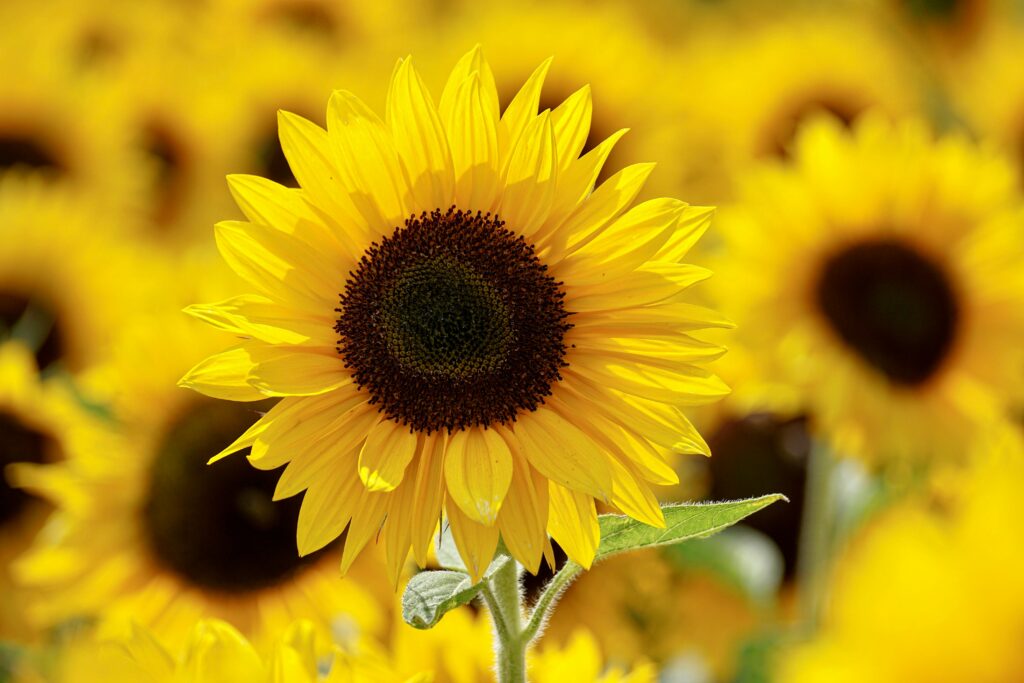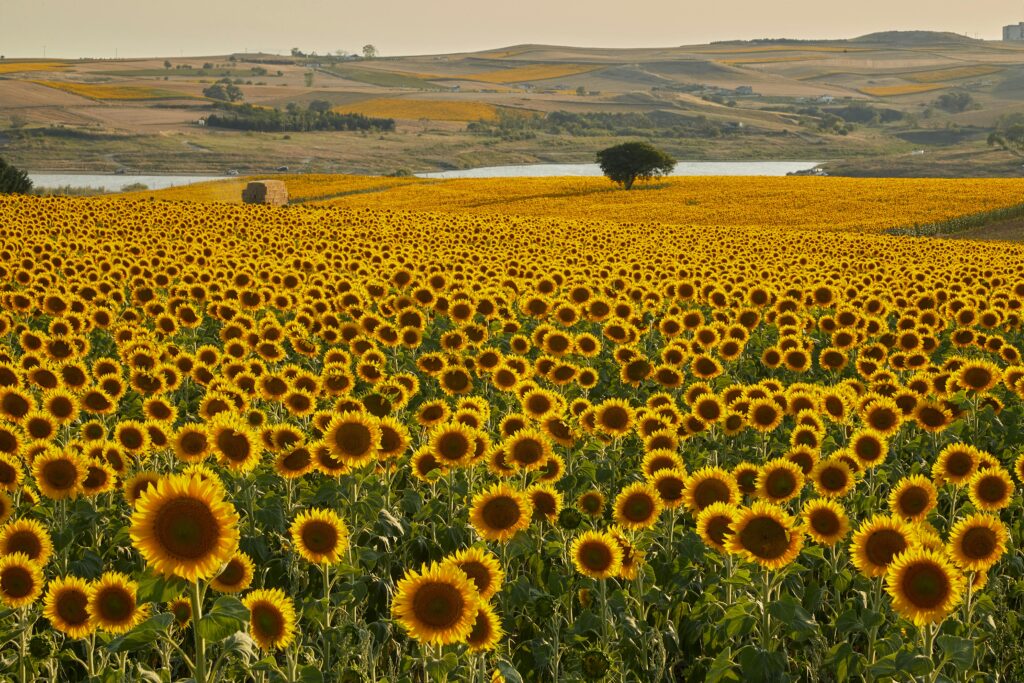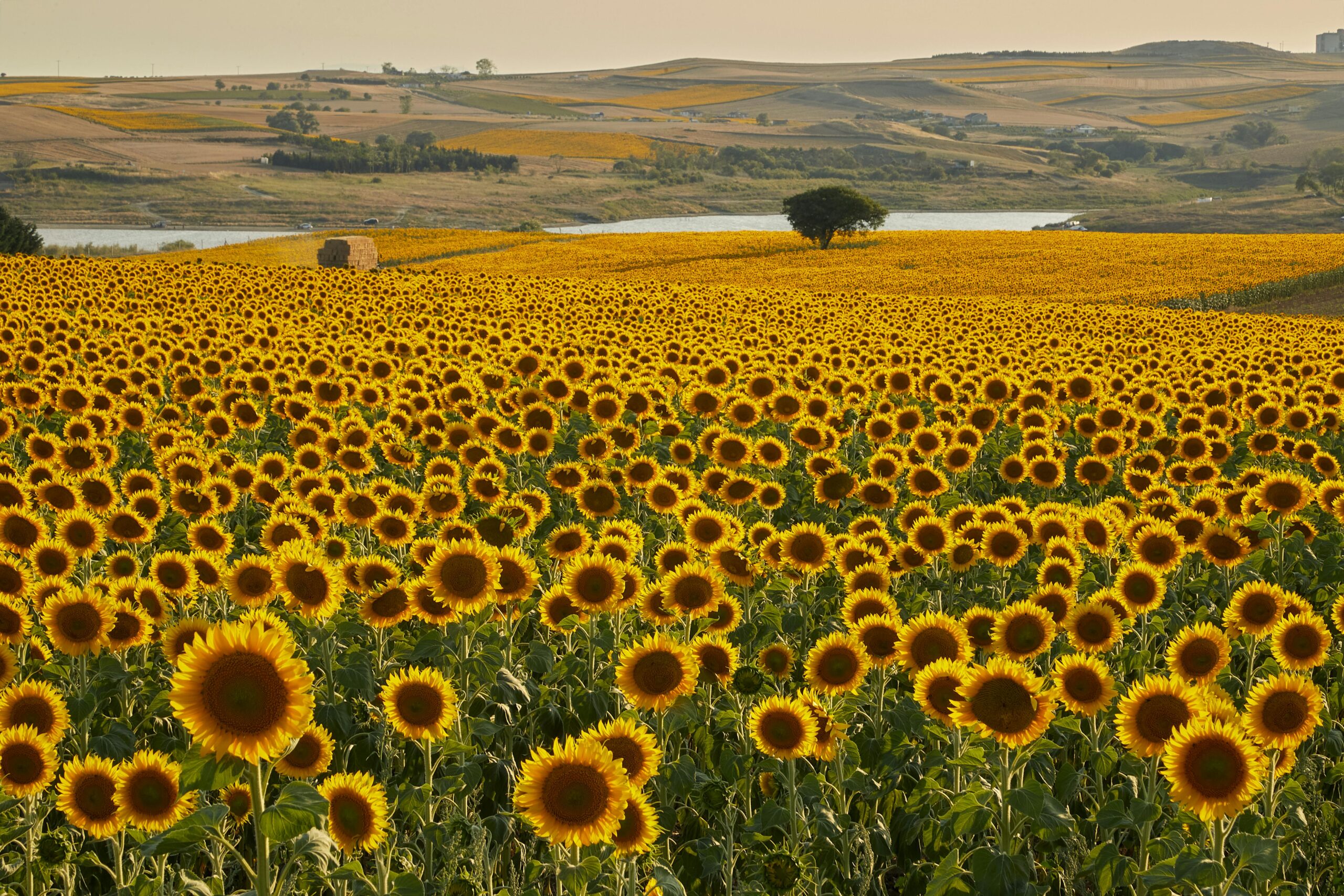
Sunflowers probably spring to mind when you think of summer, expansive fields, and golden skies. Sunflowers are more than just lovely plants; they are tall, bright, and charming. Beyond their sunny exteriors, they carry centuries of history, cultural symbolism, and useful applications. Whether you have seen sunflowers growing across farmlands, tasted sunflower seeds as a nutritious snack, or simply admired them in a vase, these flowers have probably had some sort of impact on your life.
This blog delves deeply into the world of sunflowers, including their history, development, cultural significance, health advantages, and how to cultivate them. You’ll understand why they’re frequently referred to as nature’s golden marvel by the end.
The History of Sunflowers
The history of sunflowers is fascinating and dates back thousands of years. Native to North America, Indigenous peoples cultivated them for the first time more than 4,500 years ago. Sunflowers were much more than ornamental plants in these communities. In addition to being a staple food, they were also used as dye, oil, and medicine. Long before there were modern farming methods, seeds were roasted for consumption, ground into flour for bread, and pressed for oil.
The value of sunflowers was immediately recognized by European explorers upon their arrival in the Americas. Sunflower seeds were introduced back to Europe in the 16th century, where they quickly gained popularity as crops. They were welcomed, especially in Russia. Since most oils were prohibited by the Orthodox Church during Lent, but sunflower oil was permitted, sunflowers became indispensable in Russian agriculture by the 18th century.
The Beauty of Sunflowers
It have a way of making people pause and smile. Perhaps it’s their enormous stature, which can occasionally exceed ten feet. Perhaps it’s the sunshine-like radiance of their vivid yellow petals. Or perhaps it’s heliotropism—the way their heads turn toward the sun during the early stages of growth.
Sunflower heads, as young plants, move from east to west with the sun during the day before resetting overnight. They can grow by absorbing as much sunlight as possible thanks to this process. In order to attract pollinators and warm up more quickly in the morning, mature flowers typically settle facing east. Their enchanted charm is enhanced by this dance with the sun.
The Cultural Significance of Sunflowers
Sunflowers are deeply symbolic in many cultures. Their cheery, open faces frequently stand for joy, warmth, and optimism. Because they follow the sun’s path, they are symbolic of devotion and loyalty in many cultures.
China: These are symbols of longevity, prosperity, and contentment.
According to Native American customs, they represented provision and the harvest.
Europe: These were used by artists such as Vincent van Gogh to depict light, passion, and beauty. His well-known “Sunflowers” series is still regarded as one of the most recognizable art collections ever.
Sunflowers are still given as gifts to express gratitude, happiness, and joy. They have also come to represent hope in trying times, most recently as a worldwide symbol of peace and solidarity with Ukraine.
Why Sunflowers Are Important Now
Sunflowers are not just plants. They serve as a reminder of how nature can blend beauty and functionality. Sunflowers are ideal in a time when people are looking for natural remedies, healthier diets, and sustainable farming practices. In addition to enhancing our soil and providing food for wildlife, they also provide us with food, oil, and beauty.
They remain significant in today’s world because of their symbolism of resiliency and hope. The picture of a sunflower facing the sun and standing tall serves as a reassuring reminder to keep going forward with courage and hope when things get tough.
The Flower’s Scientific Basis
These are beautiful, but they also have fascinating biological properties. A group of numerous tiny flowers known as florets makes up what appears to be a single flower. The central brown disk is home to hundreds or even thousands of tiny flowers that eventually turn into seeds, while the yellow “petals” we see are ray florets.
The Fibonacci sequence is a mathematical pattern that describes how these seeds are arranged. This spiral design demonstrates how nature blends efficiency and beauty by optimizing the number of seeds that can fit inside the flower head.
Sunflowers in Farming
Sunflowers are one of the most significant crops in the world, and they are not only decorative. The seeds are a valuable agricultural product because of their high oil content. Due to its lightness, mild flavor, and heart-healthy properties, sunflower oil is frequently used in cooking, frying, and packaged foods.
The seeds are a common snack in and of themselves. Sunflower seeds are tasty and nourishing whether they are roasted, salted, or added to granola. They are a vital component of the food chain since they are also fed to livestock and birds.
Health Benefits of Sunflower Seeds and Oil
Sunflowers have remarkable health advantages in addition to their agricultural value.
Heart Health: Sunflower seeds are a great source of heart-healthy fats, especially unsaturated fats.
Rich in Nutrients: Rich in protein, vitamin E, magnesium, and selenium, all of which are essential for good health.
Anti-Inflammatory Properties: By lowering inflammation in the body, their compounds boost immune function.
Benefits for the Skin: Because of its moisturizing and antioxidant qualities, sunflower oil is frequently found in skincare products.
Weight-Friendly Snack: Sunflower seeds are a filling snack that controls hunger because they are high in protein, fiber, and energy.
The next time you eat a handful of sunflower seeds, remember that you’re giving your body nourishment rather than just sating a craving.
Types of Sunflowers
- Giant Sunflowers: Can grow up to 12 feet tall, ideal for creating a dramatic garden statement.
- Dwarf Sunflowers: Compact and perfect for pots or small garden spaces.
- Multi-Headed Sunflowers: Produce multiple blooms on one stem.
- Ornamental Varieties: Come in shades of red, orange, and bi-colored petals.

Growing: Step-by-Step
1. Climate and Location
Sunflowers thrive in warm, sunny conditions. They require at least 6–8 hours of direct sunlight daily.
2. Soil Preparation
Well-draining soil rich in organic matter is best. A slightly acidic to neutral pH (6.0–7.5) works well.
3. Planting
- Sow seeds directly into the soil after the last frost.
- Plant seeds 1–2 inches deep, spacing them 6–12 inches apart.
4. Watering
Water deeply but infrequently. Sunflowers are drought-tolerant once established but perform best with consistent moisture.
5. Fertilizing
A balanced fertilizer during the early growth stage will encourage strong stems and healthy blooms.
6. Support
For tall varieties, use stakes to prevent bending or snapping in strong winds.
Sunflowers in Literature and Art
It is impossible to overlook sunflowers’ cultural influence. They have influenced innumerable works, from Van Gogh’s “Sunflowers” to poetry that extols their radiant beauty. They are frequently used by authors as representations of devotion, optimism, or the coziness of summertime.
As backdrops for happy, sunny moments, sunflower fields have emerged as popular destinations for influencers and tourists in contemporary photography. Their aesthetic appeal appears to be ageless.
Sunflower Uses
- Oil Production: Sunflower seeds are processed into healthy cooking oil.
- Food: Seeds are eaten as snacks or added to recipes.
- Wildlife Attraction: Birds and pollinators love sunflower seeds and nectar.
- Decorative: Popular in bouquets, centerpieces, and garden designs.
Common Pests and Problems
- Aphids and Caterpillars Can damage leaves and stems.
- Birds and Squirrels Often steal seeds before harvest.
- Fungal Diseases: Can cause wilting or leaf spots; ensure proper spacing for airflow.
Fun Facts About Sunflowers
- The tallest sunflower ever recorded reached 30 feet in height.
- Sunflower heads are actually made up of hundreds of tiny flowers called florets.
- Native Americans cultivated sunflowers over 4,500 years ago for food, medicine, and dyes.
Conclusion
Sunflowers are more than just a beautiful sight in summer—they’re a powerhouse of beauty, utility, and symbolism. Easy to grow and full of benefits, they make an excellent addition to any garden or farm. Whether you’re planting them for their golden blooms, tasty seeds, or pollinator attraction, sunflowers will bring sunshine into your life in more ways than one.
